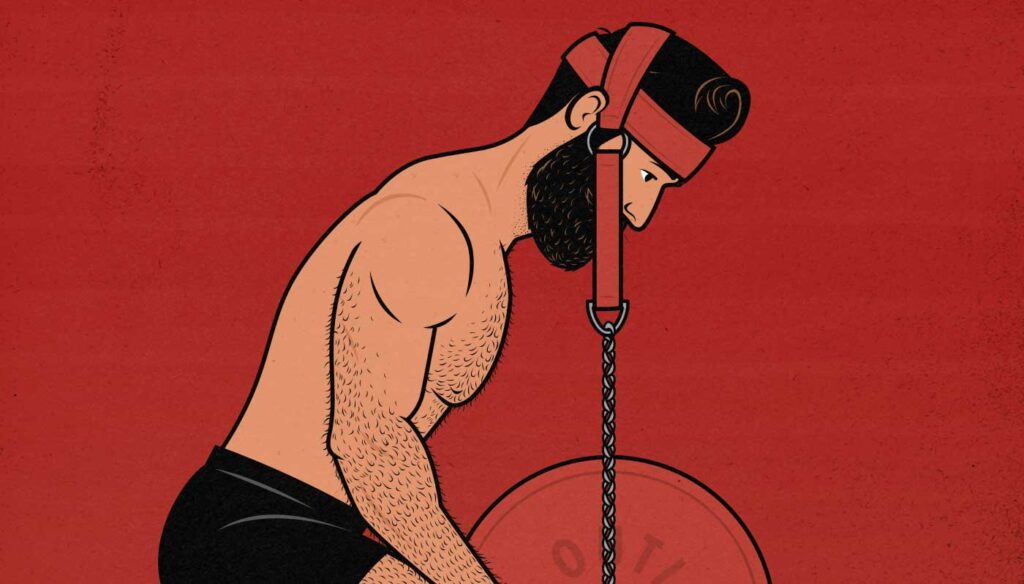
GreySkull LP: Is It Good for Gaining Muscle Mass?
GreySkull LP (GSLP) is a powerbuilding program designed to help beginners get bigger and stronger. It’s one of the more popular programs in the strength training community, and it’s often recommended to people who are interested in building muscle.
What’s interesting about GreySkull LP is that it’s a modern evolution of programs like Starting Strength, StrongLifts 5×5, and 5/3/1. It has that same foundation of heavy strength training, but it goes beyond that, adding in a couple simple changes that make it more robust.
So, is GreySkull LP any good at helping beginners gain muscle mass?

What is GreySkull LP?
GreySkull LP, often abbreviated as GSLP, is a powerbuilding program designed by the former paratrooper John Sheaffer, aka Johnny Pain. He created the program after trying Starting Strength and wanting to improve upon it. His new-and-improved strength training program has a few defining characteristics:
- The program is heavily rooted in powerlifting, but it also has some bodybuilding added into it, which is a type of weight training called powerbuilding. Note that powerbuilding isn’t a combination of training for size and strength, it’s a combination of training for powerlifting and bodybuilding, which we’ll explain below.
- Like Starting Strength, this program is built on a foundation of 3 sets of 5 repetitions (3×5) on a few core lifts: the squat, bench press, overhead press, and deadlift.
- But unlike Starting Strength, the final set for the main exercises are “5+” sets, done for as many reps as possible (AMRAP). This ensures that we’re always pushing ourselves with every workout. It also drives the training volume a bit higher, which is good for gaining muscle mass.
- Like most beginner strength training programs, this is a linear progression program, meaning that weight is steadily added to the bar over time. But because your final sets are done for as many reps as possible, there’s a bit more to it than that. And that’s great.
- Most beginner strength training routines start with the squat, but this one starts with the bench press and overhead press. The idea is that the pressing movements are less fatiguing, leaving us with more energy to do our other lifts afterwards.
- Unlike Starting Strength and StrongLifts 5×5, where the one true path is laid out, this workout routine is analogized as a software program that uses a variety of plugins that customize it for various goals. (I love this.)
We’ll cover the basics here, but if you like the sound of powerbuilding and you want to give the program a try, I’d recommend getting the book: the GreySkull LP: Second Edition.
The GreySkull LP Workouts
The GreySkull LP has a simple base program, with just two lifts each workout. The first exercise is either the bench press or the overhead press, whereas the second exercise is either the squat or the deadlift.
Workout One (Monday)
The first workout is made up of a press and a squat. The first time you do it, you’ll do the bench press and squat. The next time, you’ll do the overhead press and the squat.
- Bench Press / Overhead Press: 2 sets of 5 repetitions (2×5) and then a third set set done for as many reps as possible (1×5+)
- Squat: 2×5, 1×5+
Workout Two (Wednesday)
After the first workout, you rest for a day, and then it’s time for the second workout. Because you did the bench press two days ago, you’ll start with the overhead press here.
- Bench Press / Overhead Press: 2×5, 1×5+
- Deadlift: 1×5+
Workout Three (Friday)
After another day of rest, it’s time for the third workout. Because you did the overhead press two days ago, the first time you do this workout, you’ll start with the bench press.
- Bench Press / Overhead Press: 2×5, 1×5+
- Squat: 2×5, 1×5+
That means that over the course of the week, you have 2 squat days, 1–2 bench days, 1–2 overhead press days, and 1 deadlift day. That’s it. Simple.
The Plugins
What makes GreySkull LP somewhat unique is that it includes customizable plugins that you can add into your workout routine. For example, if you want to focus on gaining overall muscle size and aesthetics, you can add in chin-ups, biceps curls, and neck extensions, giving you a routine that looks like this:
Workout One
- Bench Press: 2×5, 1×5+
- Biceps Curls: 2 sets of 10–12 repetitions (2×10–12)
- Squat: 2×5, 1×5+
- Neck Extensions: 4×25
Workout Two
- Overhead Press: 2×5, 1×5+
- Chin-Ups: 2×10–12
- Yates Row: 2×6–8
- Deadlift: 1×5+
- Neck Extensions: 4×25
Is GreySkull LP Good for Building Muscle?
Before we dive into the details, I want to be clear that we aren’t reviewing GreySkull as a beginner strength training program for aspiring powerbuilders. For the specific goal of powerbuilding, this program is popular for a reason. It’s quite good. But most of our readers aren’t interested in competing in powerlifting or bodybuilding, so we’re reviewing it as a beginner muscle-building program:
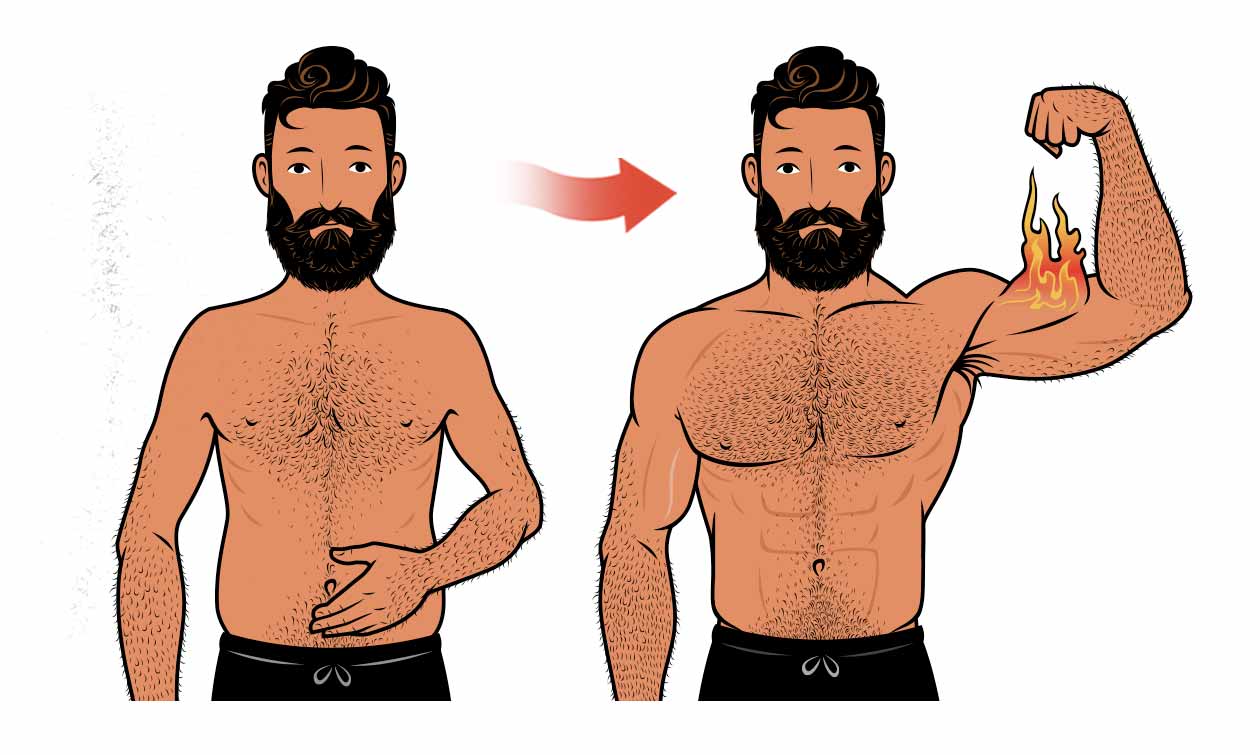
Increasing muscle size is the best way of increasing muscle strength, but that doesn’t mean that hypertrophy training (training to build muscle) is the same as strength training (training for powerlifting). Here are some examples:
- Strength training programs rarely include chin-ups. Is that because chin-ups are irrelevant to our strength? No, it’s because chin-ups aren’t in powerlifting competitions.
- Strength training programs favour the low-bar squat. IS that because low-bar squats are better for developing general strength? No, it’s because low-bar squats allow people to lift more weight for a single repetition while just barely squatting to legal powerlifting depth. For general strength, it’s usually better to squat deeper, even if that means squatting lighter.
- Strength training programs use lower rep ranges. Is that because lower rep ranges are better for building muscle or gaining general strength? No, it’s because lower rep ranges have better transference to 1-rep max strength in powerlifting competitions. To gain muscle mass and general strength, it’s almost always better to lift in more moderate rep ranges, choosing the best rep range for each individual lift and purpose.
So as we review this program, keep in mind that we’re not powerlifters. If you want a review from a powerlifting perspective, Izzy over at Powerlifting to Win has a good review (and concludes that GreySkull is great for aspiring powerlifters). In this review, we’re going to talk about whether GreySkull Lp is good for helping beginners build muscle and get strong.
Training Volume, Frequency & Balance
To build muscle, we need to train hard enough to challenge our muscles, do enough reps per set, do enough sets per week, and train often enough. The idea is, the more challenging sets we do, the faster we build muscle. Up to a point, anyway. We need to make sure that we’re fully recovering from our training, too.
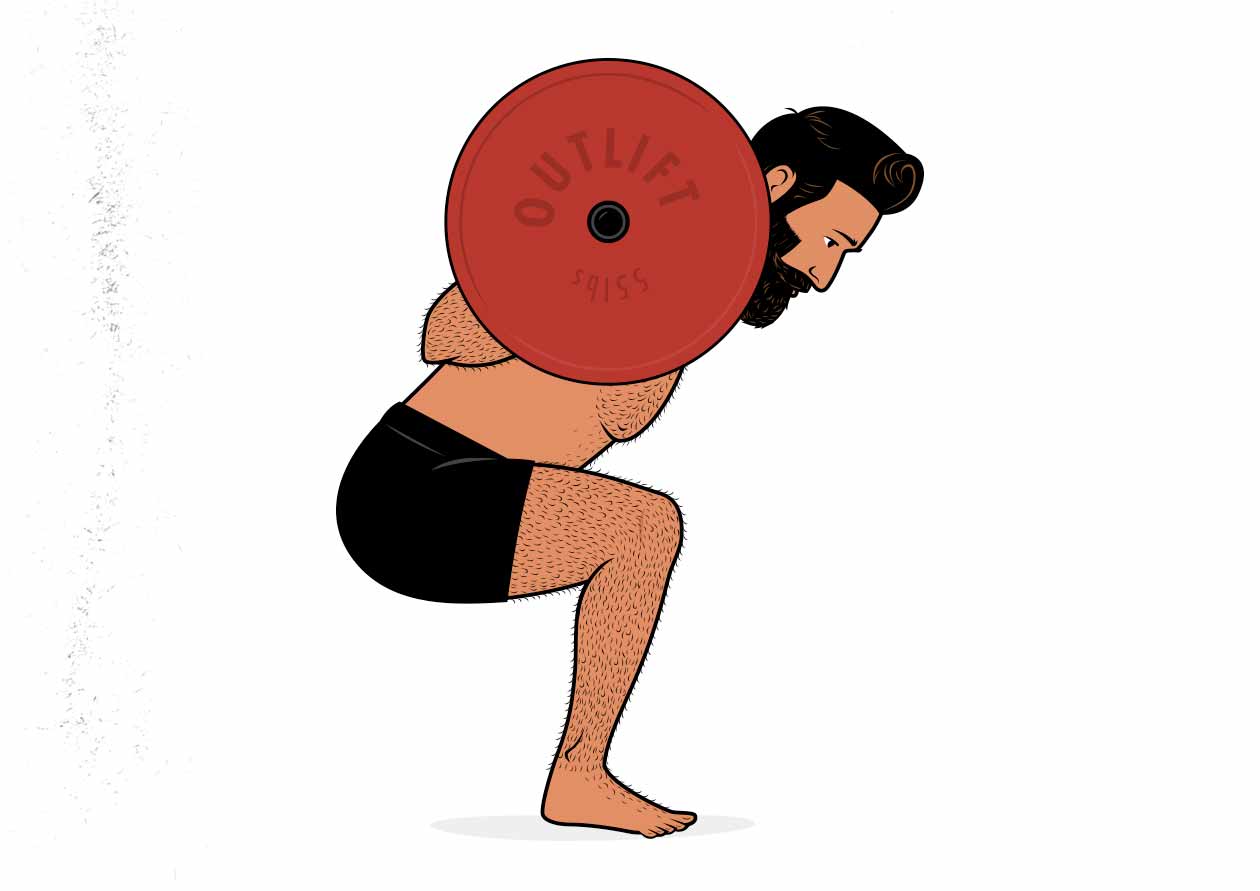
In GreySkull LP, you’re doing 3 sets of squats twice per week for a total of 6 sets; you’re benching and overhead pressing 1.5 times per week (on average) for a total of 4.5 sets; and you’re deadlifting once per week, for a total of 1 set. This training volume is a little bit low for everything but our hips and quads. However, that gives us room for the “plugins,” which allow us to add in extra volume for our target areas.
As for the muscular balance of the GreySkull program, it’s rooted in powerlifting culture, and so it’s all about the hips, quads, front delts, chest, and shorter heads of the triceps. After all, those are the powerlifting muscles. The bigger you build those muscles, the more you’ll be able to squat, bench press, and deadlift.
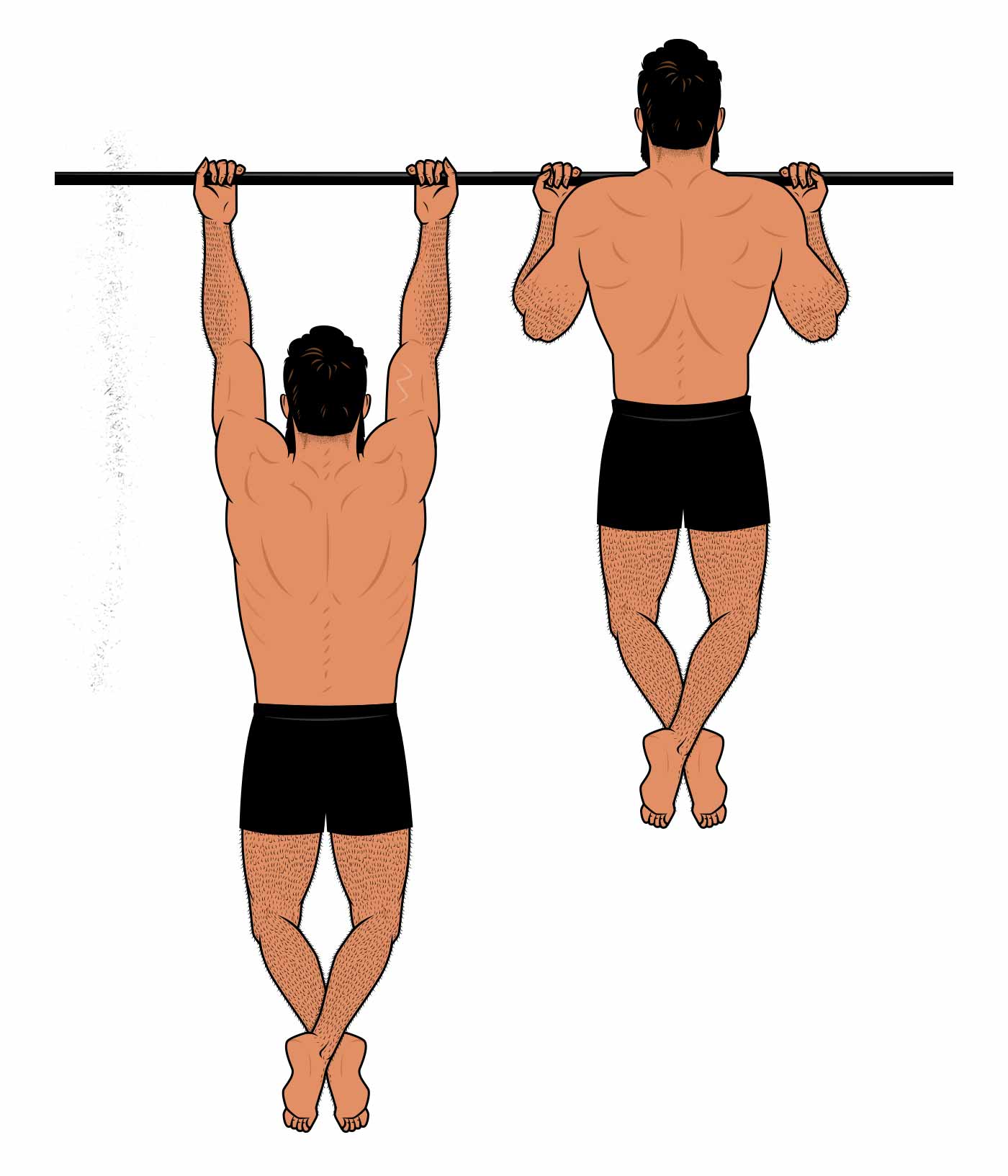
We run into potential problems when we look beyond the powerlifting muscles, though. There’s nothing for the upper back, the biceps, the long head of the triceps, the forearms, the abs, the neck, and so on. However, for men looking to bulk up and improve their aesthetics, Johnny Pain recommends adding:
- Weighted chin-ups: 2 sets of 6–8 reps
- Biceps curls: 2 sets of 10 reps.
- Neck extensions: 4 sets of 25+ reps.
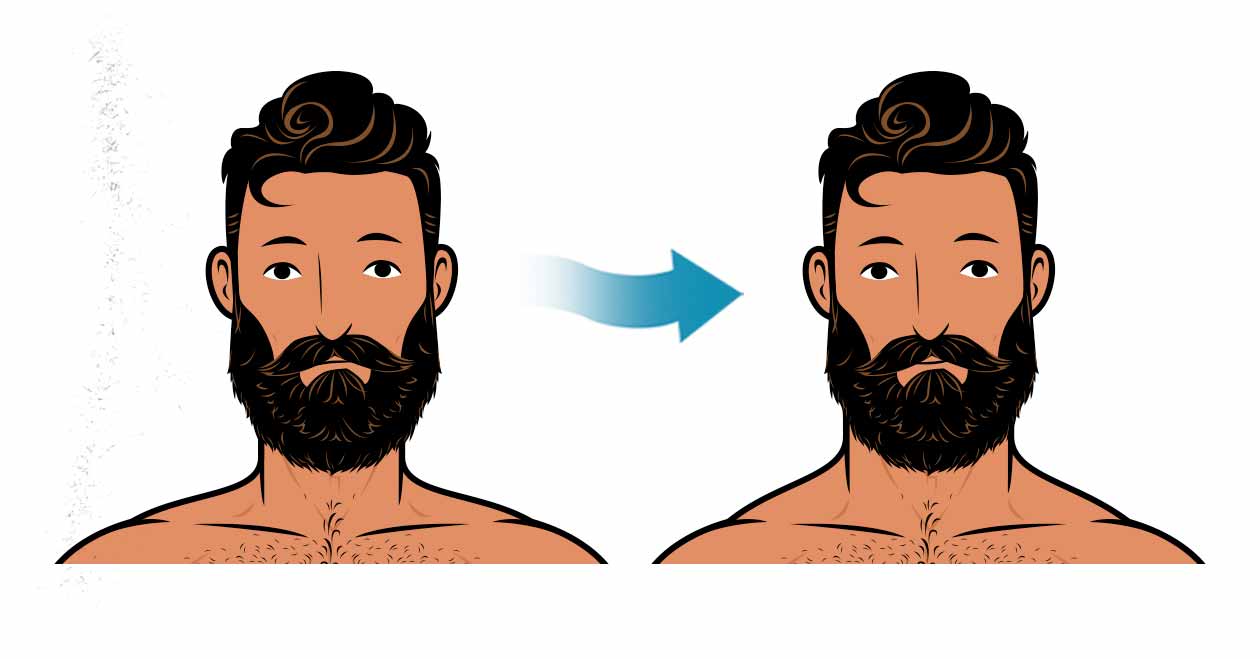
Still, if it were me designing this program, I’d make the program better for stimulating overall muscle growth by default, including a good balance of pushing (bench press and overhead press) and pulling (rows and chin-ups), as well as biceps curls, triceps extensions, and lateral raises. And for the neck, I’d use a mix of neck extensions and neck curls. Most guys are eager for that extra upper-body growth, it’s quite easy to recover from, our upper bodies tend to respond well to higher training volumes, and it will yield more overall muscle growth.
What’s awesome about GreySkull LP, though, is that it doesn’t use insanely high training volumes. You’ll find a lot of beginner programs, such as Max/Size by Athlean-X, that recommend doing as many as 5–10 sets of 10 repetitions, which is absurd. Not only does it take forever, but it also fails to stimulate any extra muscle growth, often causing so much muscle damage that it actually hampers growth. Much better to add in 2 sets of 10–12 reps of biceps curls.
For someone interested in gaining muscle mass and general strength, this program isn’t bad, but it’s not ideal, either. For someone who getting into powerlifting, though, this is a solid way to gain some muscle size while you do it.
Full-Body Workouts
I love how all of these beginner strength training programs use full-body workouts. Kind of, anyway. Is squatting and pressing really a full-body workout? Not really. We’d need something like a chin-up to bring in the upper back and biceps. But assuming you’re using the plugin that adds in chin-ups, these are bonafide full-body workouts. And regardless, all of these workouts engage at least most of the muscles in our bodies.
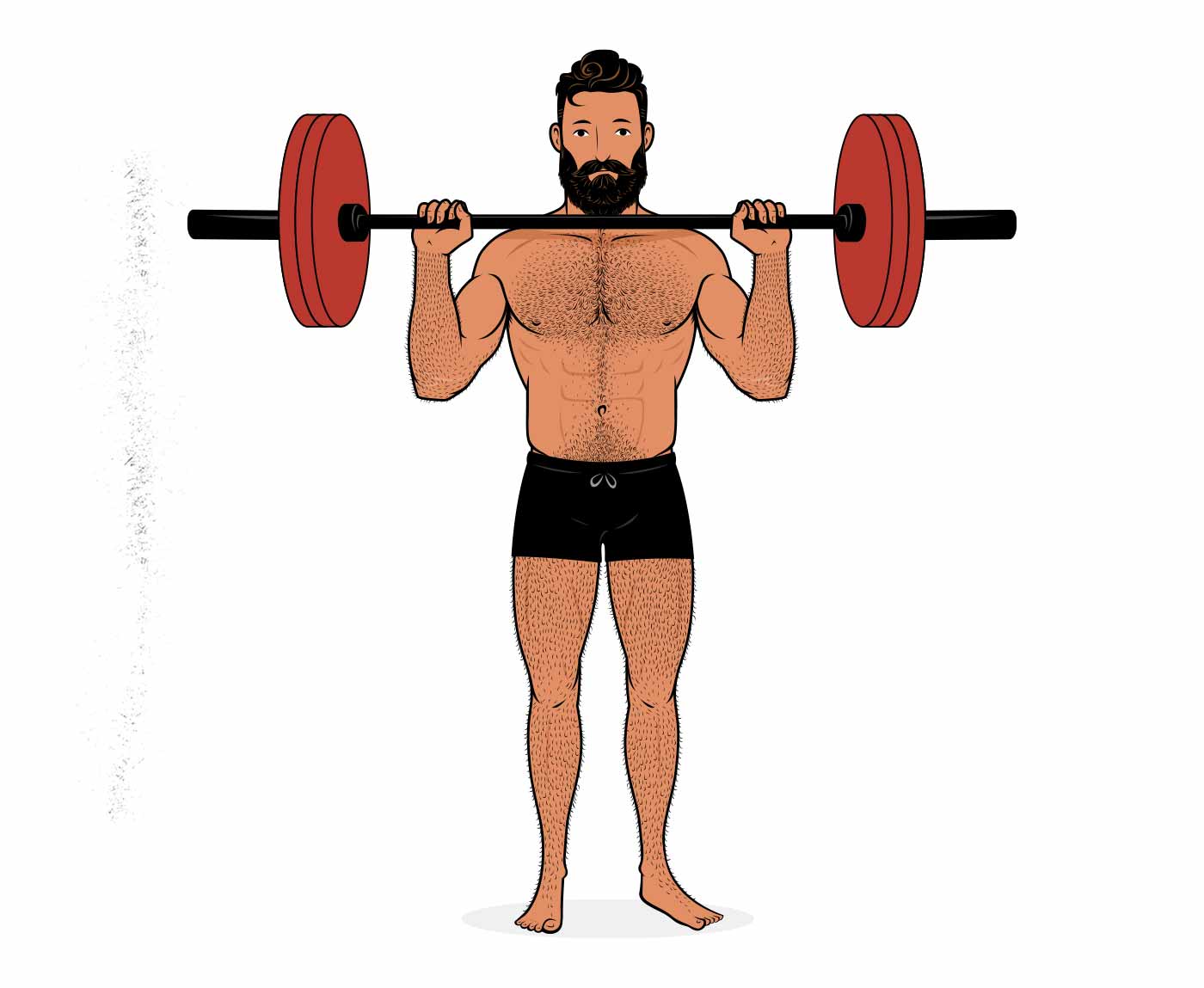
There are a ton of different ways to organize a muscle-building program, including push/pull/legs and upper/lower routines, done for anywhere between 2–6 workouts per week. But for beginners, nothing beats full-body workouts done 3 times per week. Here’s why:
- Beginners don’t need tremendously high training volumes or terribly long rest periods, making it realistic for them to train their entire bodies in a single hourlong workout.
- Beginners often get quite sore, benefitting from at least a couple days of rest between workouts. Yes, you could train a different muscle group every day with a body-part split. But since you hold all of those weights in your hands and stabilize it with your traps and lower back, some muscles are being worked every workout. To get around that problem, people need to use all manner of weird lifts and machines, at which point things get needlessly complicated. That’s why it’s usually better to alternative between rest days and workout days, at least until those main stabilizer muscles become so tough that it doesn’t matter.
- Each workout stimulates roughly two days of muscle growth. If we train our entire bodies every second day, then, we can be building muscle all week long. (With a bit of extra rest on Sunday to help get rid of any lingering fatigue.)
So by doing 3 full-body workouts per week, we have a good mix of stimulation and recovery, and we’re able to keep all of our muscles growing at full speed all week long. It’s perfect for beginners.
GreySkull LP uses three full-body workouts per week, which is totally ideal for helping beginners build muscle. It’s not the only way of doing it, but it’s probably the best way.
Sets of 5 Reps
GreySkull LP, like a lot of beginner strength training programs, is advertised as being great for helping beginners gain muscle size. But at its heart, for better and worse, it’s a strength training program, and it’s rooted heavily in powerlifting. One of the defining traits of strength training programs is that the rep ranges are low, often just 1–5 reps per set.
The reason strength training uses lower rep ranges is because it allows us to lift weights are closer to our 1-rep max, which helps us learn how contract all of our muscle fibres simultaneously for an all-out effort. This type of adaptation is often called “neural gains.” It doesn’t make our muscles much bigger, and it doesn’t make us stronger in higher rep ranges, but it does allow us to lift heavier weights for a few reps. This is the specialized type of strength needed to excel at powerlifting.
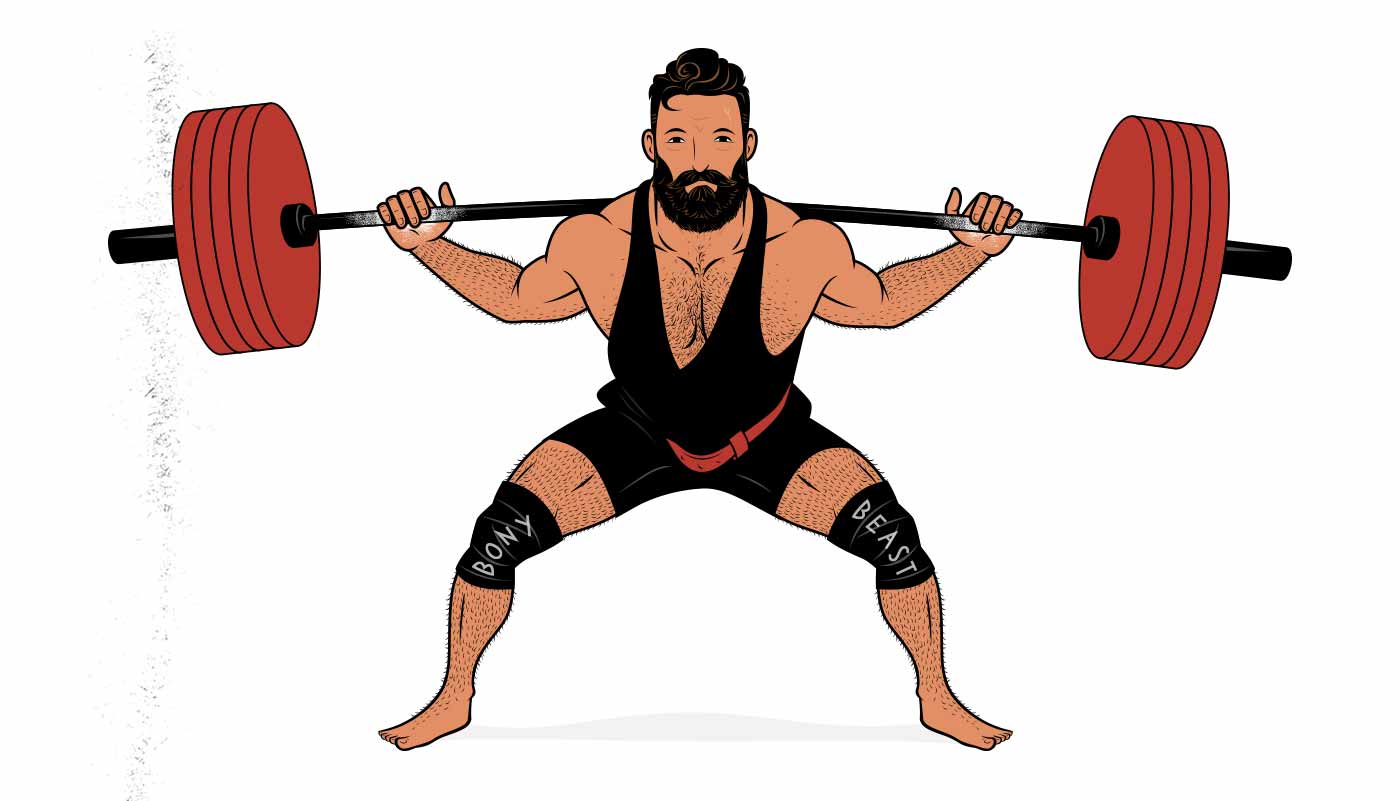
If you aren’t interested in powerlifting, though, these low-rep sets are often a bad idea. Sets of 1–5 reps tend to stimulate less muscle growth per set (systematic review), with more wear and tear on our joints, and with a higher risk of injury. In our strength training article, we covered a study by Brad Schoenfeld, PhD, that illustrates this effect:
- The strength training group did 7 sets of 3 repetitions. It took them 70 minutes to finish their workouts, and by the end of the study, they were complaining of sore joints and overall fatigue. Two of the participants dropped out of the study due to injuries.
- The hypertrophy training group did 3 sets of 10 repetitions. It took them 17 minutes to do their workouts and they finished hungry for more. There were no dropouts, and everyone finished the study feeling fresh.
Both groups gained the same amount of muscle mass, but that doesn’t tell the whole story. The strength training group was wrecked. They couldn’t do any more, they felt awful, and a bunch of them had to drop out due to their injuries. The hypertrophy training group, though, had plenty of time and energy to do more work. If they had wanted to work out for the same 70 minutes that it took the strength training group, they could have easily added in some extra lifts for extra body parts, stimulating far more muscle growth.
So strength training does stimulate some muscle growth, and if enough sets are done, it can even stimulate the same amount of muscle growth. But the workouts also take longer and are harder on your body, which isn’t just inefficient, it also comes with a significant opportunity cost. For powerlifters, that’s a worthy trade-off. For non-powerlifters, it often isn’t.
Now, GreySkull LP isn’t so bad here. These aren’t sets of 3 reps, these are sets of 5 reps. And on our final sets, we do as many reps as we can, often getting a good 7 reps. Then, if you choose a plugin designed to boost muscle growth, those lifts are done for 6–12 reps per set, depending on the lift. So although this program has a foundation in powerlifting, there’s some conventional bodybuilding training tacked on. As a result, this program is better for building muscle than many other beginner strength training programs, such as Starting Strength and StrongLifts 5×5.
So are the rep ranges used in GreySkull LP ideal for building muscle? Not quite, since it’s a strength training program at heart. But nearly so, as it also includes some dedicated hypertrophy training.
Progression
The “LP” in GreySkull LP stands for linear progression, meaning that every workout, a little bit more weight is added to the bar. As we grow stronger, these heavier weights continue to challenge us, making us stronger still. This is the type of progression used in the apocryphal story of Milo of Croton, who carried a calf every day until it grew into a bull.
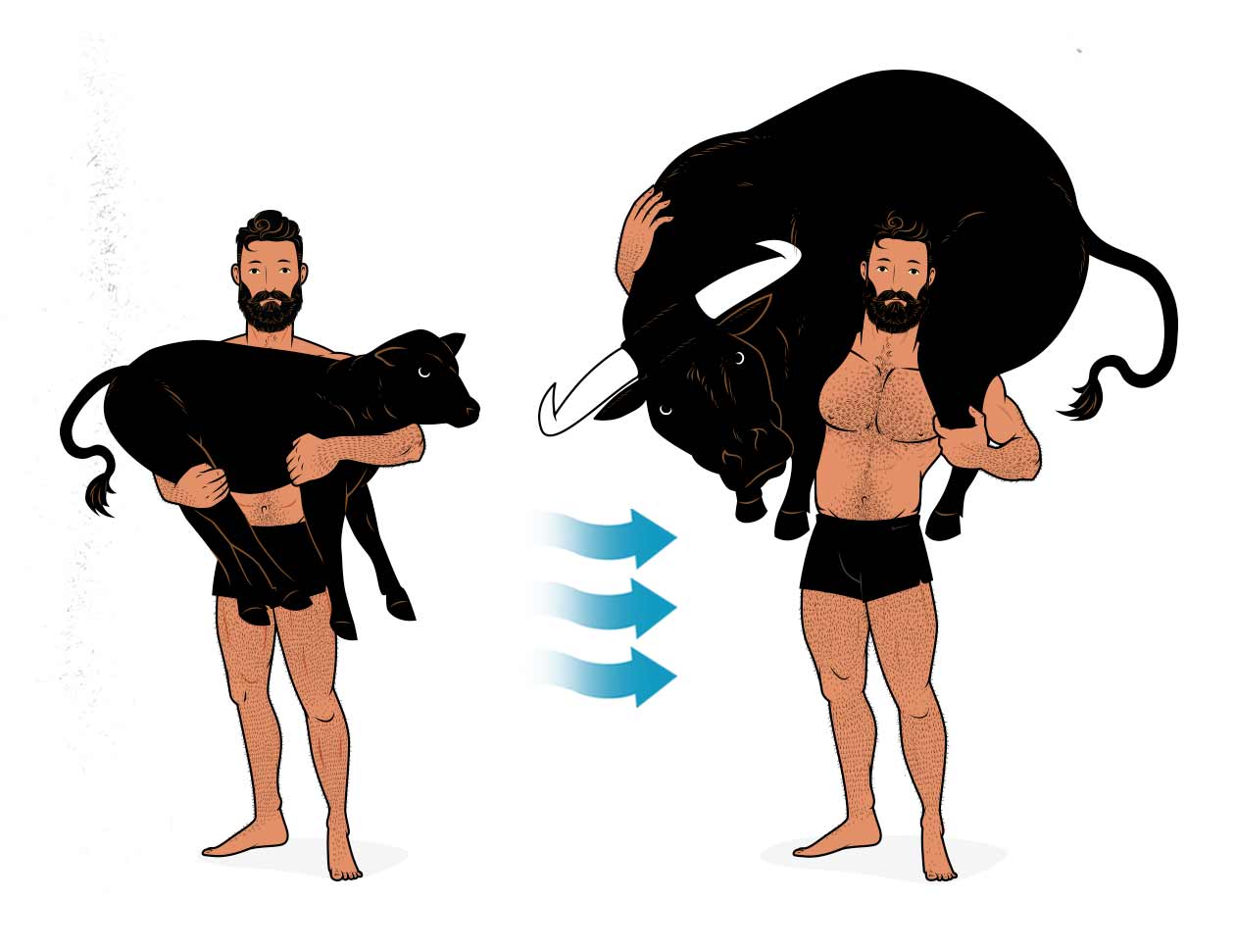
In this particular program, John recommends adding weight like so:
- Squat & Deadlift: +5 pounds every workout
- Bench & Overhead Press: +2.5 pounds every workou
The AMRAP sets give GreySkull LP a bit of extra nuance, though. Instead of simply grinding away at 3 sets of 5 repetitions, adding a little weight each workout, the final set is done for as many reps as possible, stopping right before muscle failure, with 0 reps in reserve (0RIR). That means that if a beginner is progressing faster than expected—which is fairly common—the program accelerates to meet them there, allowing for faster progress. That’s great.
Now, linear progression can’t last forever. Eventually people stop being able to keep up. Eventually the calf grows too heavy and you need a break. In GreySkull LP, when someone hits a plateau, the recommendation is to strip 10% of the weight off the bar and work your way back up. With these sets of 5+ reps, though, when we take 10% of the weight off the bar, it allows us to complete quite a few more reps on our final sets. Those extra reps drive us into the hypertrophy rep range, making the sets better for stimulating muscle growth, and allowing us to gain a bit of muscle size as we start adding more weight to the bar again. That makes this program a bit better at breaking through plateaus than some of its rivals.
GreySkull LP uses a mix of linear progression, which is common in strength training, and 0RIR training, which is ubiquitous in hypertrophy training routines. This is an effective and proven way of gaining muscle size and strength.
Lift Selection
The lift selection in GreySkull is great in the sense that it emphasizes big compound barbell lifts that engage a ton of overall muscle mass. The low-bar squat, bench press, deadlift, and overhead press are all great lifts for building muscle. Then, if someone is trying to gain muscle mass, a few other lifts are worked into the rotation:
- Chin-Ups, which are perhaps the best lift for the upper back.
- Yates Rows, which are second only to the chin-up.
- Biceps curls, the best lift for the biceps, of course.
- Front squats! In a rare move, we have a strength training program that uses front squats for gaining muscle mass. And that’s perfect.
I’m impressed with this. This is a great roster of lifts for building muscle. Now, one nitpick here is that these lifts are often hard to learn. Not always. Some people are naturally athletic. Some people have in-person coaches. And so some people will do great with these lifts right from the get-go.
Even for skinny, out-of-shape beginners who are starting from scratch, most of them will be able to learn the barbell lifts within a few weeks. That might mean that they don’t build much muscle during their first couple months of training, but if they’re patient enough, that won’t really matter. In our experience, most skinny beginners are eager to build muscle yesterday, and so they’d probably hate having to wait for so long. But a couple years down the road, the end results will be the same.
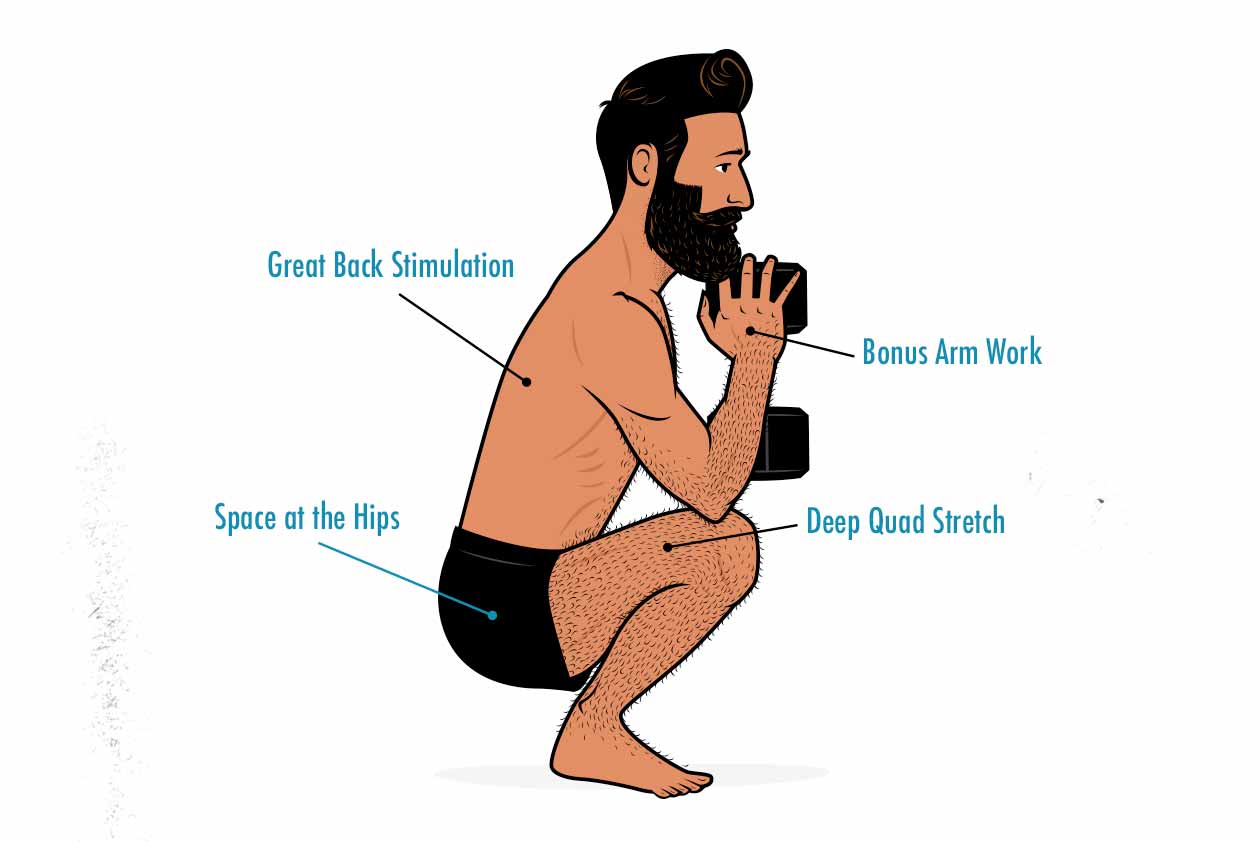
One solution is to swap out some of the more complex lifts for simpler ones, such as swapping out the back squats and front squats for goblet squats. Not only are they infinitely easier to learn, allowing you to start stimulating muscle growth much sooner. (And if you don’t have dumbbells, no problem. You can use weight plates.)
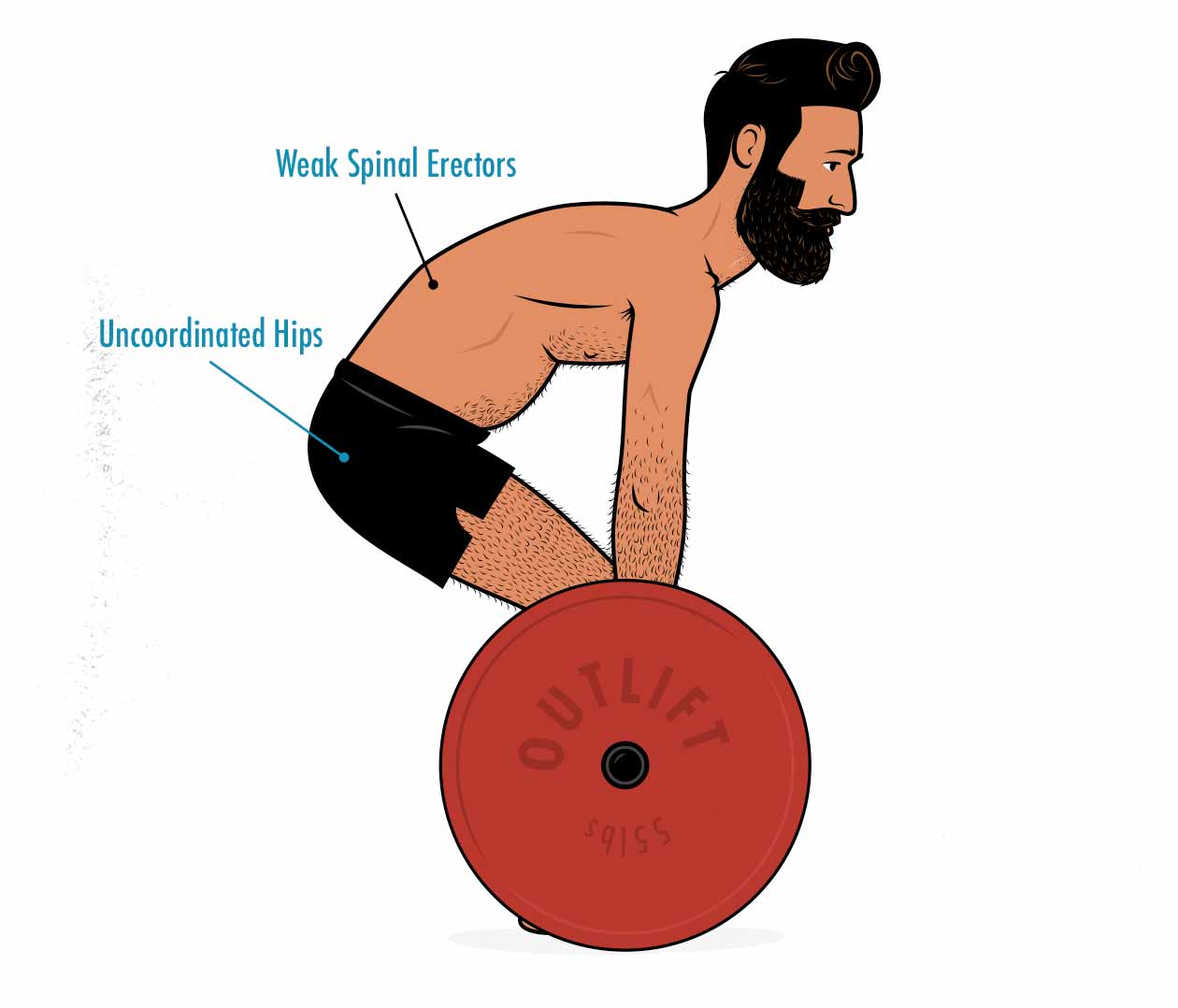
For another example, why start beginners with conventional deadlifts? When beginners do barbell-centric routines—which are great—they’re often limited by their lower-back strength. Plus, beginners usually have trouble keeping their lower backs in the proper position when learning the deadlift.
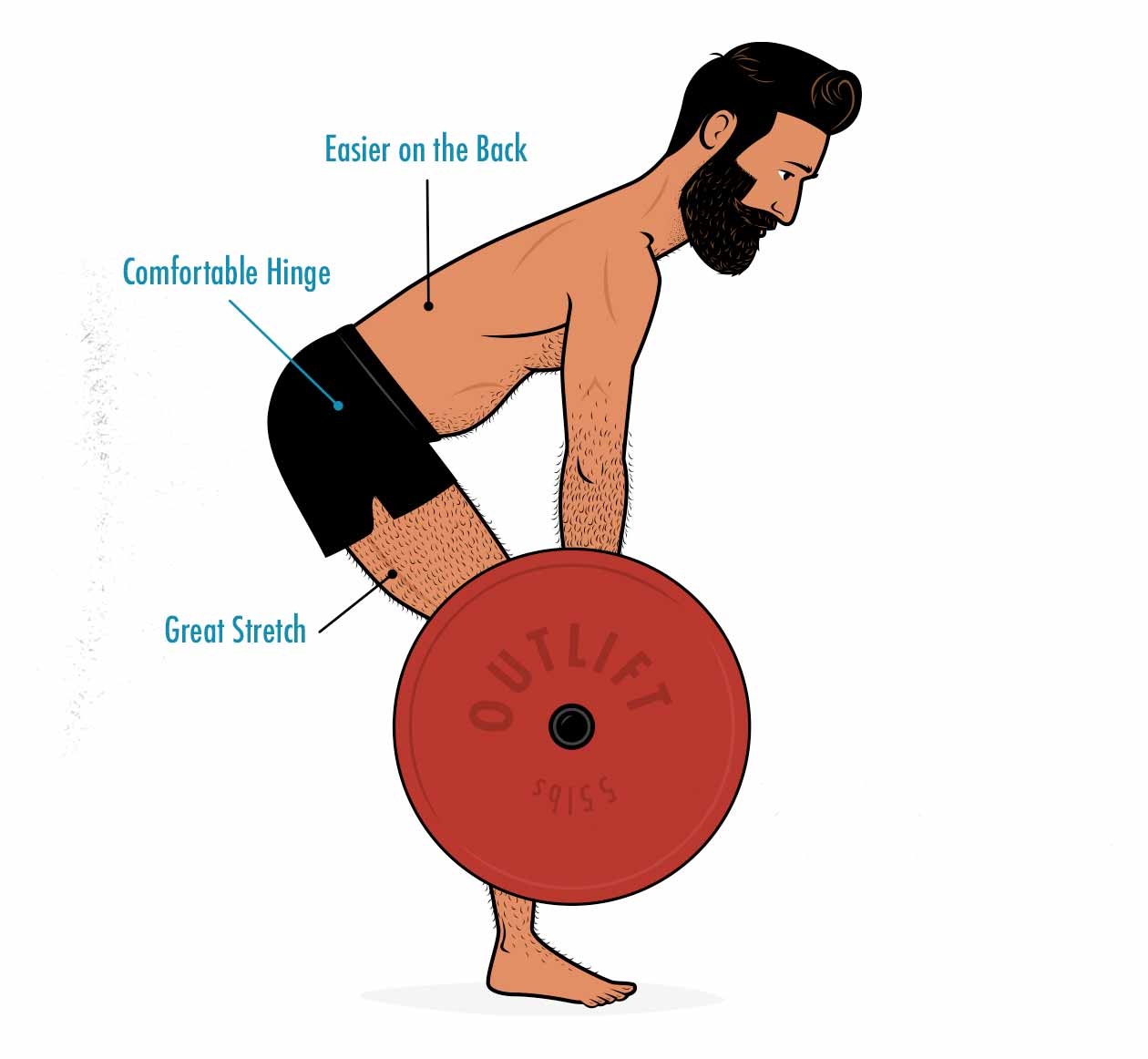
In our experience, it’s often better to start them off with Romanian deadlifts. Not only is it easier to learn, but it’s also easier on the lower back, it’s less fatiguing overall. That would allow for more sets, too, yielding more overall muscle growth.
So, overall, the lift selection in GreySkull is great. For a beginner lifter who’s eager to build muscle fast, the lift selection could be a bit better. Even then, though, it’s not bad. Compound barbell lifts are great. But you’ll build muscle faster by using beginner variations of the compound lifts + adding in more isolation lifts.
Phraks GreySkull LP
Some of the critiques we’re levelling here, such as a lack of upper-body pulling work, has been addressed by the strength training community already. For instance, a Reddit user named Phrakture added in barbell rows and chin-ups to the core GreySkull LP Program, creating Phraks GreySkull LP, and giving us workouts like so:
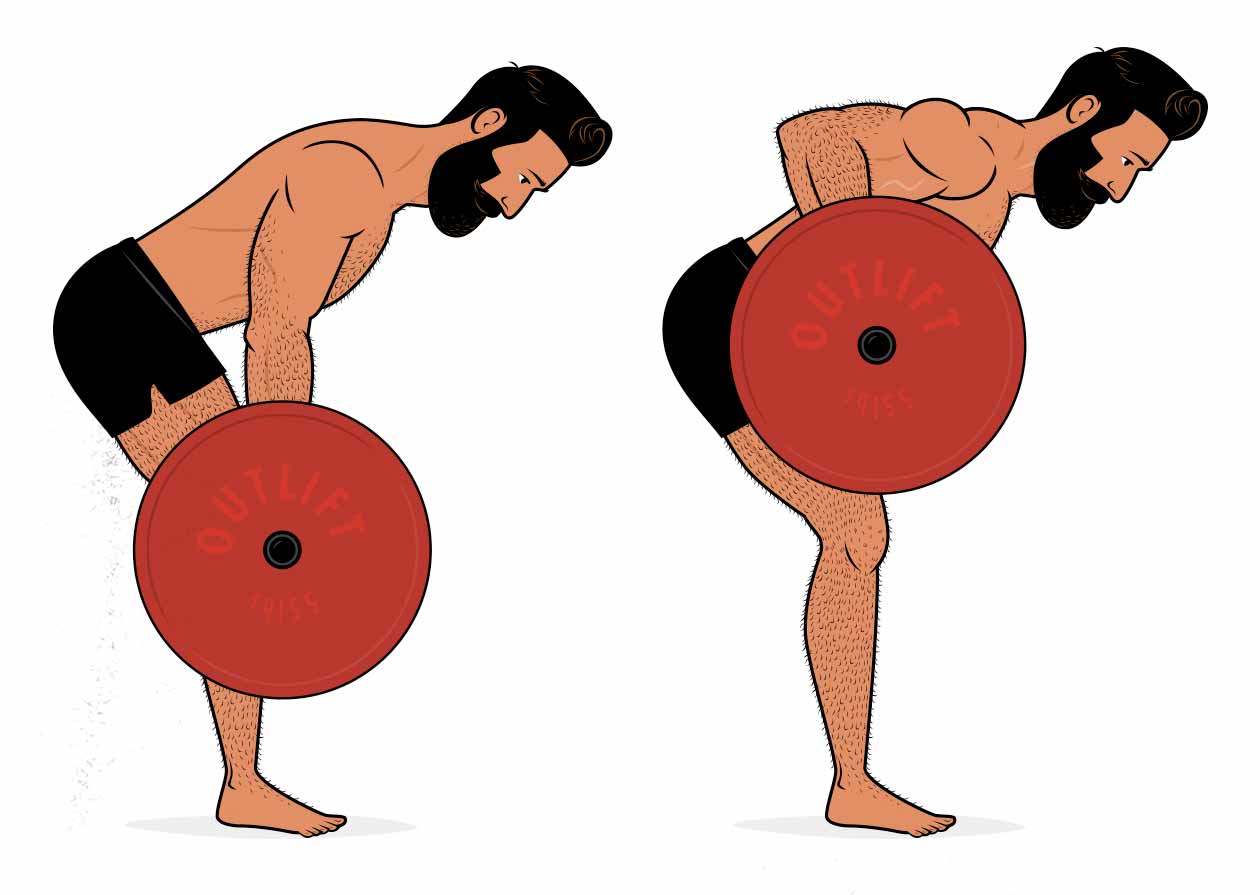
Workout 1
- Bench Press / Overhead Press: 2×5, 1×5+
- Chin-Ups* / Barbell Row: 2×5, 1×5+
- Squat: 2×5, 1×5+
*If you aren’t strong enough to do chin-ups, use lowered chin-ups instead.
Workout 2
- Bench Press / Overhead Press: 2×5, 1×5+
- Chin-Ups / Barbell Row: 2×5, 1×5+
- Deadlift: 1×5+
Workout 3
- Bench Press / Overhead Press: 2×5, 1×5+
- Chin-Ups / Barbell Row: 2×5, 1×5+
- Squat: 2×5, 1×5+
This workout program is good, and I think Phraks GreySkull LP is a solid improvement to the base program. It doesn’t surprise me that this variation became so popular in the strength training and powerbuilding communities.
But if you buy the GreySkull LP Book, there’s already a workout routine in there that includes chin-ups and rows, as well as biceps curls and neck extensions, and done in hypertrophy rep ranges. It even recommends front squats. So I’d argue that the official GreySkull routine with the mass gain plugin is the better program for building muscle.
Powerbuilding
There are different ways of getting stronger. The powerlifter wants to build a stronger bench press, and so he’ll start most workouts with the bench press, include useful assistance lifts like overhead presses and close-grip bench presses, and perhaps some skull crushers. What about the upper back? The biceps? Building broader shoulders? It doesn’t matter. Those muscles don’t contribute to the bench press, nor the other powerlifting lifts, and so they’re irrelevant.
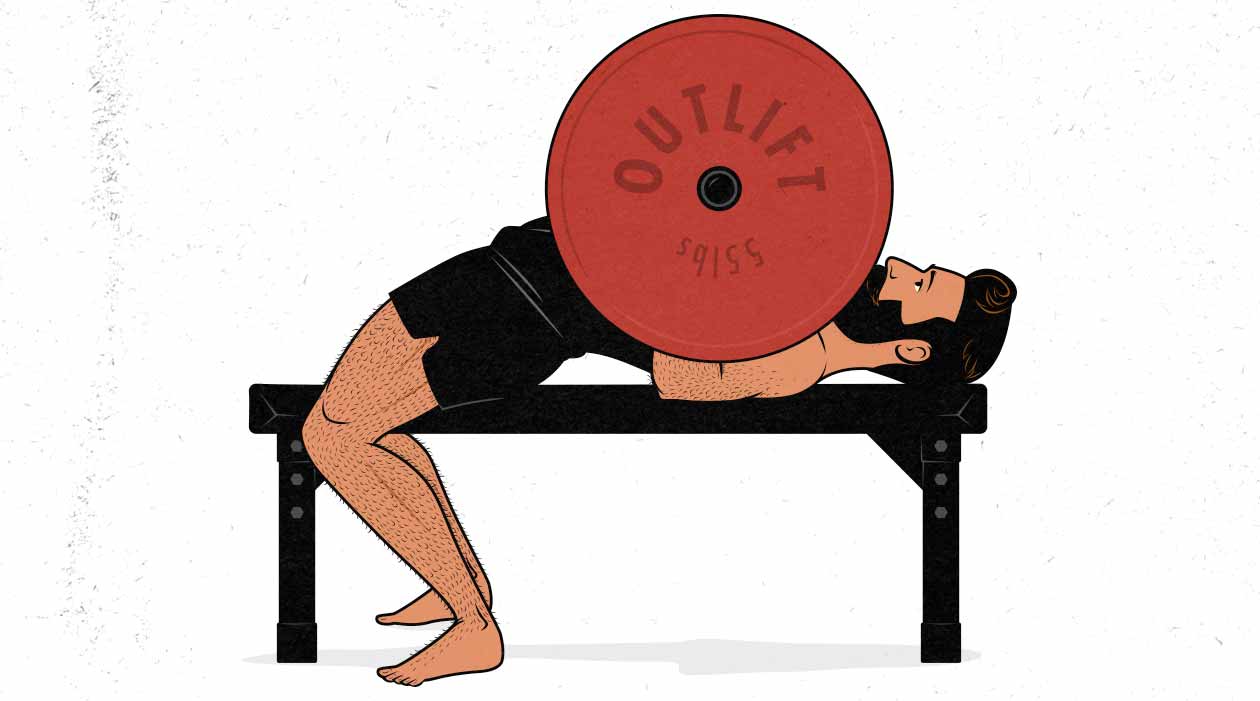
But the guy training for general strength wants to build a stronger upper body. To do that, he’ll use a wide variety of upper body lifts and rep ranges so that he can build more overall muscle mass and gain more versatile strength. He’ll still use the bench press and overhead press—those are amazing lifts—but he might also include dips, chin-ups, barbell rows, overhead extensions, lateral raises, biceps curls, and whatever other lifts suit him best. His routine is flexible, and all types of strength matter.
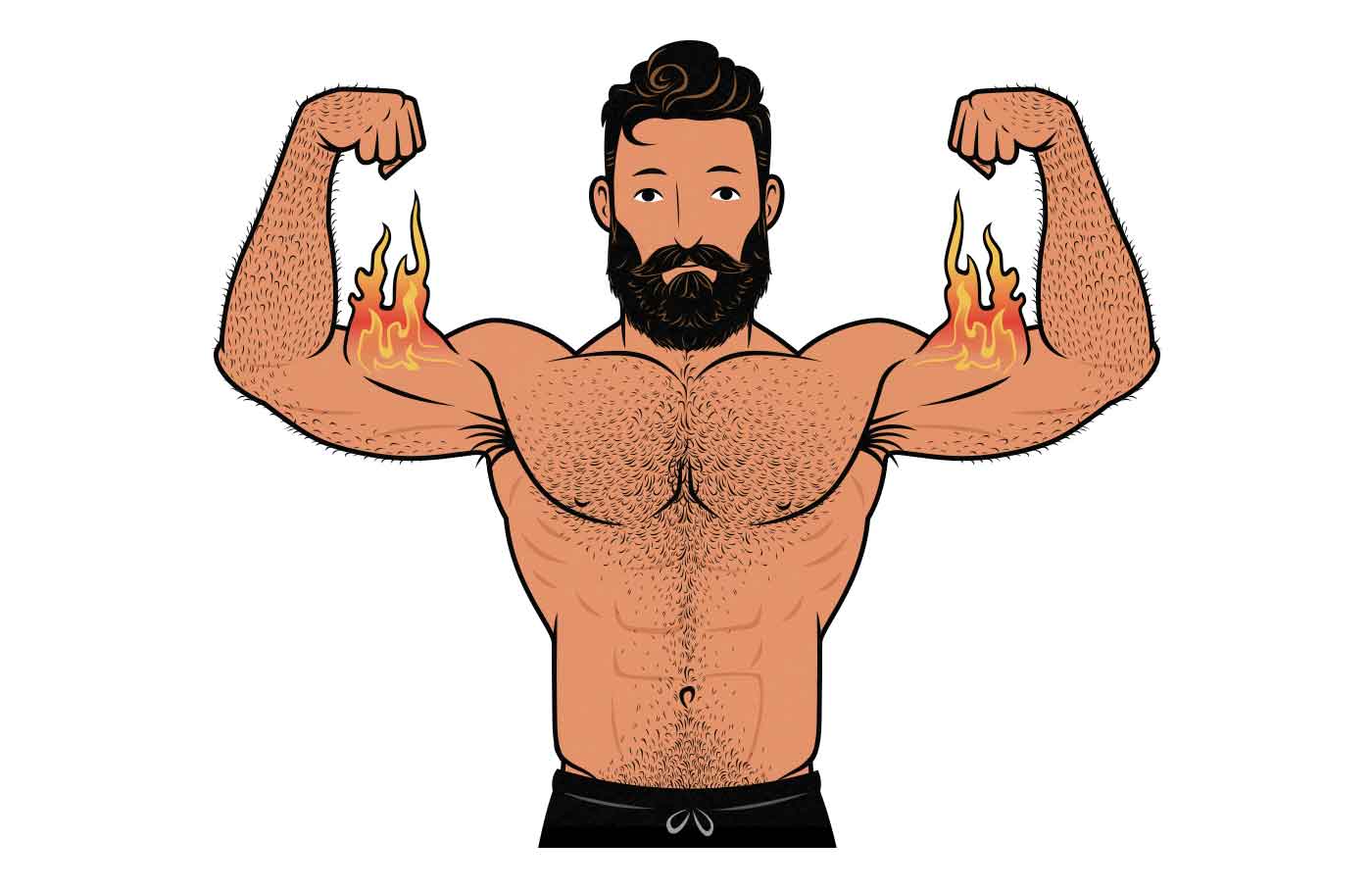
The powerlifter might have a stronger lower chest, stronger front delts, and stronger medial and lateral heads of his triceps. He’ll be totally adapted to lifting sets of 1–5 reps. And he’ll be much more practiced at the bench press. As a result, he’ll have a stronger bench press—a more specific kind of strength. But the guy training for overall strength will have a bigger upper body, he’ll have greater general strength, he’ll look better, he’ll have better general health, and his joints will be stronger.
Now, what happens if we combine powerlifting with training for overall muscle mass? We keep the root of powerlifting, but we add in bodybuilding, and we get powerbuilding, which is what GreySkull LP is. Is that the best way to train for muscle size? No, because the powerlifting is still in there. Better to remove the powerlifting.
What is it called when we train for muscle mass and general strength? Hypertrophy training. That’s the style of training that’s designed for building muscle. It also tends to be better for us overall, too—easier on our joints, a lower risk of injury, harder on our cardiovascular systems, better for developing grit and endurance, and better for improving our body composition. The downside, of course, is that it won’t make us great at powerlifting.
So the question, then, is how much do you care about powerlifting?
Summary
Is GreySkull LP great for building muscle? Not quite. It’s too rooted in powerlifting and strength training. And that’s fine. Not everyone needs to train to gain muscle mass. Some people want to get stronger for their size, squat heavier barbells, and compete in powerlifting. That’s not a flaw in the programming, you just need to consider whether it aligns with your goals.
Yes, it’s possible to add in hypertrophy training plugins to build bigger arms, or accomplish a variety of other goals. However, the program maintains its powerlifting root, turning itself into a sort of powerbuilding program. For people primarily interested in building muscle, hypertrophy training is a better approach.
Even from muscle-building perspective, though, GreySkull is quite solid, especially if you use the mass gain plugin. In fact, it’s better than the more popular programs, such as Starting Strength and StrongLifts 5×5.
Still, if your main goal is to gain muscle mass, I’d change a few things:
- Use moderate rep ranges instead of sets of 5. There’s nothing wrong with sets of 5 for guys who are training for powerlifting strength, but when training to build muscle, using 6–12 reps as the default rep range would make it easier to build muscle faster.
- Include chin-ups as a primary lift, giving it similar priority to the other big compound lifts.
- Use more single-joint movements for target areas. For example, the mass-gain plugin would benefit from some lateral raises and triceps extensions to go along with the curls. After all, it’s not just the biceps that are being neglected. The side delts and long heads of the triceps aren’t being stimulated (much) by the main program, either.
- If the program is for beginners, it would be better to include beginner variations of the big barbell lifts. A barbell could still be used, too. Think Romanian deadlifts instead of conventional deadlifts.
But this is nitpicking. I quite like this program. It’s one of the better beginner strength training programs I’ve seen, and if you’re an aspiring powerlifter and bodybuilder, I think you’d like it.



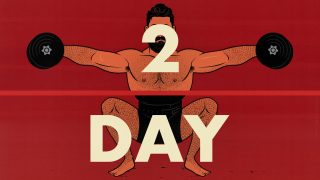
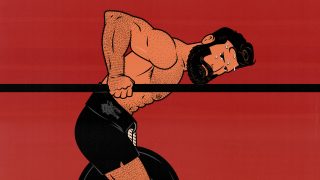
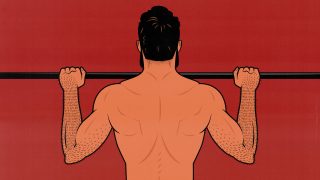
Hi Shane, I have used this GSLP myself too, for few months, and it is really good.
It’s other good feature is that it encourages to do sub maximal sets of bodyweight chin up and push up / dips everyday to keep metabolism up and help with recovery. Burpees on daily basis also included for fat loss n getting ripped. Plus you also do fasted walking but I didn’t do this or burpees as I am already quite lean and focussed more on weightlifting part and bodyweight drills.
Another good feature is that it also encourages to do two conditioning workouts per week, on off days or after main workout, whatever suits you. It helps in GPP &work capacity. In fact there is a book comprising 50 sample conditioning drills n challenges…most of them are basically using loaded carries, sandbag, swings, and other major things.
These features make GSLP quite unique, interesting, and effective when compared to other traditional strength programs that assume you won’t do anything outside of the program.
Yeah! I saw that in the eBook. I think sub-maximal “active recovery” stuff is cool, but I’m not huge on the burpees or fasted walking. Not that there’s anything wrong with it, either, though, and I like the idea of being generally active and healthy. I’d just recommend non-fasted walking instead, especially for skinny people who are already having trouble eating enough calories to gain muscle.
And I totally agree. This is one of the better strength training programs I’ve seen. There’s a lot to love here 🙂
Yes Shane, underweight or skinny/slim persons should do minimal to no burpees or fasted walk and keep bodyweight and conditioning challenges to minimum to moderate level depending upon their energy levels and body fat; and focus more on lifting part and muscle building plug ins.
Overweight people should give good weightage to burpees and conditioning challenges to speed up metabolism and fat loss. Fasted walk shall then feel like peanut.
One more good feature of GSLP is that every workout begins with upper body giant – benching or pressing – followed by all upper body plug ins, and squats/deads come in the end so that upper body may be hit with maximum energy intensity.
There’s nothing wrong with being active, doing burpees, or going on long walks, even as a skinny guy who’s trying to bulk up. I just mean that when we’re trying to build muscle, I’m not sure there’s a benefit to fasting, and there may even be a downside. So the idea of fasted walking seems like a poor way of doing it. Better to eat breakfast and then go on the walk, you know?
For overweight people trying to lose weight, fasting is one of many options. Not necessarily better, but it can help with appetite management. I’m not sure there’d be a benefit to the fasted walking, but I love long walks for fat loss. And cardio, whether trying to lose or gain weight, is always great for general health.
Yeah, I’m not a fan of always starting workouts with squats. That’s a big downside of Starting Strength, I think, and an even bigger downside to StrongLifts 5×5 because of those 2 extra sets. But the idea with those programs is to focus on the squat, so, eh, it works well for that.
Yes agreed Shane.
I did GSLP for a year or so, but modified it to use a base of 7 reps. That gave me anywhere from 7,7,6 to 7,7,12 depending on where I was in the progression. I also added weighted chinups and curls, and did the daily bodyweight pushups and chinups. In the end, it turns out I had a selection of lifts and rep ranges very similar to Outlift, but used the GSLP progression scheme. I liked it, and really appreciated the flexibility and lack of dogmatism in the program. But once Outlift came out, I realized I had just been trying to create Outlift in the first place, so switched over.
The flexibility and lack of dogmatism in GreySkull is so refreshing. Really gave me a good impression. And for it wants to be—a beginner powerbuilding program—I think it’s totally sweet.
You’re right that if you take the powerlifting out of it, making it more about building muscle, it really does become similar to the Outlift program. I was surprised by that when going through it. Pretty cool.
I went into this expecting something like StrongLifts but wound up finding something much better.
Hi Shane, what is great about you guys is that you made a real beginner program with b2B, made for really weak people. While it seems that these other programs on the internet are toward already naturally stronger guys, which makes their job of programming much easier.
And they are a bit all similar, strongly influenced by the powerlifting tradition.
And with Outlift program you did something even more difficult, get people who spin their wheels for years to start gaining again. Now I am at phase 2 and it’s working! Cannot wait to get to phase three and measure improvements against my older PRs made with StrongLifts. And still enjoying it at every step of the way.
Woot! So stoked to hear that it’s working so well for you, Tomas 😀
I remember being a super skinny dude and feeling like none of these programs were made for me. That’s why we wanted to make Bony to Beastly, and I think that’s why it was so successful: there was a hole in the market. There was nothing for truly skinny people.
Another great article, you should do a review of 5/3/1. I personally have been using 5/3/1 for the past year or so after injuring myself rather severely from a deadlift. I’ve used a 5×5 type workout for a while and before that was just random bro split type for the first 3 years of lifting. I don’t believe 5/3/1 is good for hypertrophy in its original form. If you add one of the many variations then it makes it much better for that goal. My focus is on strength and only do one major lift per day, 4 days a week (parallel squat, overhead press, bench press and deadlift). This version is called I’m not doing jack $&@). I’m pretty much where I want to be hypertrophy wise. I feel 5/3/1 is a solid choice for intermediate to advanced trainees as I’ve seen substantial improvements in both hypertrophy and strength. That’s just me, however, and I think your site does thorough and very informative reviews. I think you should give 5/3/1 a review. Keep up the great work!
Thank you, Damien!
Yeah, reviewing 5/3/1 is a great idea. I’ll put that on the list of articles to write 🙂